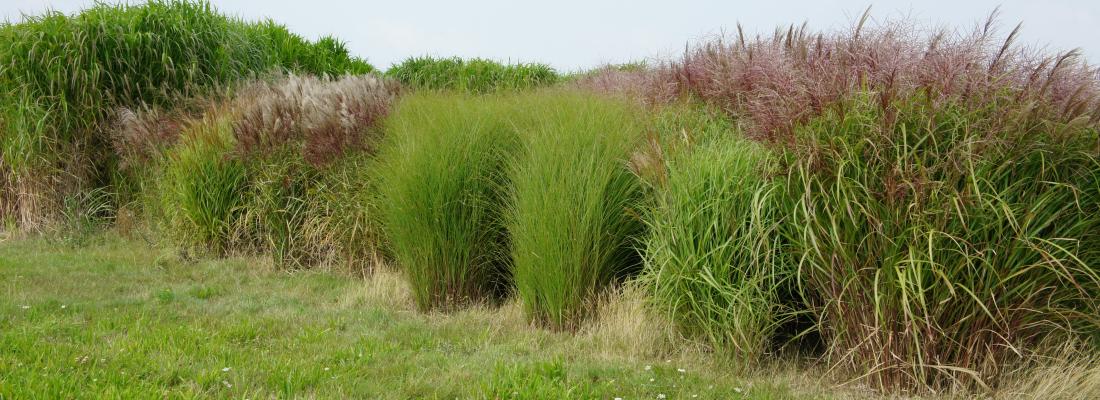France
March 31, 2021
 © Aline Waquet - INRAE
© Aline Waquet - INRAE
Wei HOU of UMR BioEcoAgro in Estrées-Mons is defending his thesis this Wednesday, March 31.
Miscanthus, a perennial C4 plant, is being exploited for energy and industrial end-uses. Miscanthus sinensis is a promising species for the supply of new varieties due to its high genetic diversity. As miscanthus biomass production increases with the duration of the crop cycle, flowering-time related-traits are key targets in breeding. Our main objective was to discover alleles related to flowering-time in miscanthus using the homology of known flowering related genes in maize and sorghum.
The thesis was based on a population generated from a cross between two diploid M. sinensis varieties, “Silberspinne” and “Malepartus”. Two groups of genotypes were established according to a staggered-start design, in 2014 and 2015 in Northern France. They were phenotyped for flowering-time related traits in 2018 and 2019. Genetic parameters (heritability and genetic variation) and correlations (phenotypic and genetic) were estimated for these traits. The age and climate effects were accounted for using two different linear mixed models. Best linear unbiased predictors of genotype, genotype × age interaction (GxA), and genotype × climate interaction effects (GxC) were estimated and the corresponding QTLs were detected. Moreover, a parent of the population, “Malepartus”, was studied along floral transition by dissecting apices in 2018 and 2019. Stems were classified into three stages (vegetative, transitioning and reproductive) and samples were collected for each stage on three tissues (apex, immature and mature leaves). Using RNA-seq analyses, differentially expressed genes among stages were identified for each tissue. Finally, the search of homologous genes in miscanthus was carried out from databases of known flowering-time related genes in maize and sorghum. The genes found under the QTL clusters previously identified were also included.
Three series of results were obtained. First, all flowering-time related traits were delayed about 20 days in 2019 compared to 2018, which was explained by a decrease of 3°C in maximal and minimal temperatures before floral transition. The climate change between both years involved an increase of the genotype × climate interaction variance compared to genotype × age interaction variance. Finally, the climate effect lowered the genetic parameters for all flowering-time related traits in 2019, up to 20 % for broad-sense heritability estimates.
Secondly, the power of staggered-start design in decomposing the year effect into age and climate effects was highlighted, which improved QTL detection for flowering-time related traits. It was shown that the QTL detected for the genotype effects, when the age effect was accounted for by the modelling, can be interpreted as a result of significantly different climate conditions between 2018 and 2019. QTL coincidences for different flowering-time related traits were observed, resulting in ten QTL clusters. Greater stable QTL clusters were observed for G×C compared to G×A. Sequence alignments with known flowering-time related genes in maize and sorghum highlighted potential homologs underlying these clusters according to the miscanthus reference genome.
Finally, differentially expressed genes along floral transition were identified. From the 78.3% genes that were quantified in the whole genome of miscanthus, 13.3% were differentially expressed in the apex, 5.8% in immature leaves and 4% in mature leaves. Out of the flowering-time homologs located within the QTL clusters, four were differentially expressed along floral transition. They corresponded to KAO2 and ID1 in maize and SbID1 in sorghum.
To conclude, the results above provide a robust genetic information basis for subsequent studies on the molecular mechanisms controlling miscanthus flowering-time, and may provide reference information for its breeding. In particular, the markers associated with major flowering loci will help to tune finely flowering-time in the descents under selection.